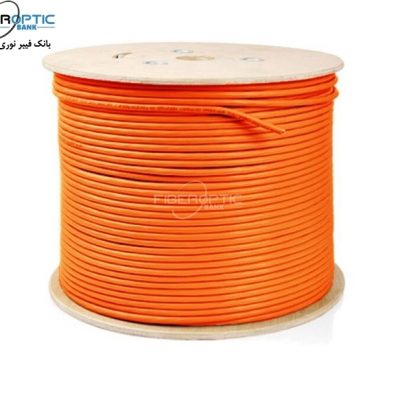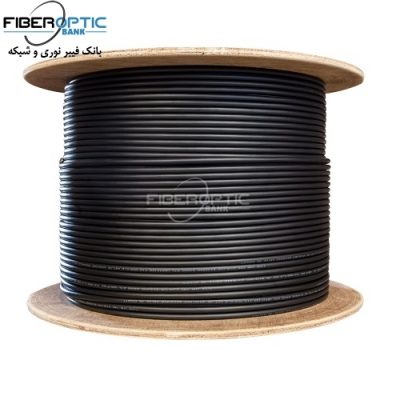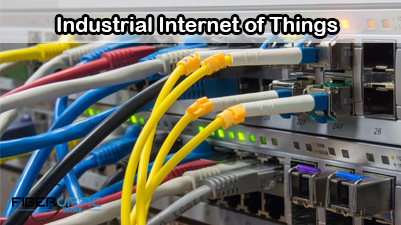SFP Port of Gigabit Switch
Small form-factor pluggable, or SFP, ports can be found in a range of network and storage devices, such as switches, servers, and routers. Gigabit switches usually come with more than one SFP port. So what is SFP port on a Gigabit switch? What are the differences between RJ45 and SFP ports? This post will explain all you need to know about SFP port on a Gigabit switch.
What Is SFP Port on a Gigabit Switch?
The SFP port on a Gigabit switch is a slot designed for use with small form-factor pluggable (SFP) connectors to enable data transmission. It offers high speed as well as physical compactness. The SFP port enables optical or copper links on a Gigabit switch through the insertion of the corresponding SFP modules (fiber SFP or copper SFP).
The only difference between the optical port and the electrical port link lies in the physical layer (media). This means an SFP port can house an SFP module with an optical port or an electrical port. Thus, fiber or copper cables are needed to realize data transmission.
When an SFP module is inserted in a Gigabit switch with electrical ports, network cables such as Cat5e/Cat6/Cat7 cables must be used for data transmission. However, when an SFP module is plugged in a Gigabit switch with optical ports, fiber optic cables have to be used to support connections. Therefore, RJ45 SFP modules are generally used for short-range uplinks to connect an all-SFP distribution switch to an all-copper edge switch. While fiber SFP modules are most commonly used for a high-speed fiber uplink over longer distances.
Common Types of SFP Port
There are three common types of SFP ports on a Gigabit switch, namely SFP Uplink ports, SFP PoE ports, and Combo Ports. Let’s explore the details of each type.
SFP Combo Ports
The combo port is a single interface with dual front ends (RJ45 port or SFP port), supporting both copper and optical SFP connections. In other words, the combo port is a compound port that can support two different physical ports. You can use either an RJ45 port or an SFP port.
However, these two different SFP ports cannot be used at the same time. Each SFP combo port is a single interface, offering a choice of two connections. One is an RJ-45 connection for a copper Ethernet cable, and the other is an SFP connection for a fiber optic cable. For instance, when a combo SFP port is being used in a Gigabit switch, the corresponding copper port cannot be used and vice versa.
SFP Uplink Ports
An uplink port is a port for aggregation to higher links, which is designed for inner-switch connection with a standard straight-through cable instead of a crossover cable. Thus, an uplink SFP port can connect to a regular port of another device.
In a traditional 3-tier network topology, there are access layer, distribution layer, and core layer from bottom to top. This means there are access, distribution, and core switches. Usuall, a SFP downlink port is used for connecting to the end devices such as laptops and PCs.
Thus, an uplink SFP port is used for connecting to a higher layer in the network topology. This also means connecting to a higher speed switch such as 10G SFP+, 25G SFP28, 40G QSFP+, and 100G QSFP28.
SFP PoE Ports
PoE, short for Power over Ethernet, refers to transmitting power and data at the same time via Ethernet cables. To put it in a simple way, an SFP PoE port is also an RJ45 port with the function of PoE to enable PoE switches to deliver data and provide power to powered devices (PDs) simultaneously over a single copper cable.
In this case, an SFP PoE port makes a PoE switch a data transmission device as well as power sourcing equipment (PSE). At home, you can use PoE powered devices such as TVs and laptops. In offices, you can use VoIP and video phones, IP cameras, wireless AP, etc.
SFP Port vs. RJ45 Port on a Gigabit Switch
In addition to SFP ports, Gigabit switches generally come with built-in RJ45 ports to allow plug-and-play Ethernet copper cables. So what are the exact differences between SFP ports and RJ45 ports on a Gigabit switch?
Connection Types
It’s the most basic difference which decides many other features of RJ45 ports vs SFP ports, so we put it at the very beginning. The RJ45 port only supports Ethernet cables (Cat5e/Cat6/Cat7) for 1Gbit/s transmission, and the distance is limited to 100m (330ft). Thus, it is commonly used to connect a computer or a router. So 1000BASE-T switch with RJ45 ports can be used in data centers for server switching, LANs, for uplinks from desktop switches or directly to the desktop for broadband applications.
In terms of SFP switches, SFP ports are more versatile and accept fiber SFP modules with fiber optic cables (both single-mode and multimode), as well as copper SFP modules with Cat5e, Cat6, Cat7, Cat8 cables. This means SFP ports support more types of communication cables and longer reaches of links.
Maximum Distance
The maximal transmission distance varies a lot due to the connections RJ45 and SFP ports used respectively. RJ45 ports support a maximum distance of 100 meters, making it more than enough for a home or small office network.
SFP ports allow greater distances. MMF cables connected to the SFP port can reach up to 550-600 meters and SMF cables 150 kilometers. If connected with a Cat5 cable, the SFP port follows a 100-meter limitation.
For short-distance links on a Gigabit switch, there is no difference between using an SFP port or RJ45 port to interconnect Ethernet switches. If you don’t plan to connect the server through optical links in the near future, you will not need an SFP port switch and you can stay with standard 1000BASE-T.
Conclusion
An SFP port enables Gigabit switches to connect to a wide variety of fiber and Ethernet cables so that switching functionality can be extended across the network. Also, an SFP port can support both RJ45 SFP modules and fiber SFP modules.
Besides, both combo and uplink SFP ports help users to configure their switches according to their own application requirements. They make power and flexibility possible.
source: community.fs

















[ratings]